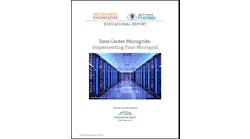A U.S. Department of Energy national laboratory is seeking market data about direct current lighting and DC building microgrid controllers to help guide its research efforts.
The Pacific Northwest National Laboratory issued requests for information from manufacturers and solution providers to understand the state of the two technologies and how they work together.
The responses will help guide PNNL’s research to advance DC lighting technology and DC building microgrids, with the goal of increasing energy efficiency and resilience while enabling Zero Energy Buildings, the national lab said.
In a DC building microgrid, on-site distributed resources like solar panels directly power DC devices, reducing or eliminating the need for equipment that converts power from alternating current to DC and associated energy losses, PNNL said.
LED lighting, a DC technology, is key to achieving an optimized DC building microgrid solution, according to the lab. “However, a deeper understanding of the benefits and barriers to adoption of these combined technologies is necessary to promote the technologies’ use,” PNNL said.
For each technology, PNNL wants information on the availability, types and characteristics of technology solutions as well as perspectives on the technologies’ benefits and adoption.
The lab is studying DC lighting and building microgrid technologies. The research aims to assess and characterize the availability of DC-based lighting technologies and associated equipment or services to integrate DC building loads with building-level photovoltaics and energy storage batteries, according to the lab.
For the RFI, PNNL defines a DC building microgrid controller as devices, equipment or solutions that connect DC building loads with DC building power sources such as PV or energy storage batteries and controls the flow of power between them. They should have the capability to interact with the electric grid to support islanding of the building microgrid.
The lab defines DC lighting as light fixtures or lamps that accept DC voltage at the driver input, including “power over ethernet” and non-PoE lighting. Driverless lighting fixtures or lamps arewithin the scope of the RFI, but the lab isn’t interested in lighting fixtures or lamps that accept only AC voltage at the driver or fixture input.
PNNL is holding a webinar on the RFIs on April 30. Responses are due by May 21. The solicitation is available on the PNNL website.
Track news about DC building microgrid projects. Subscribe to the free Microgrid Knowledge newsletter.







